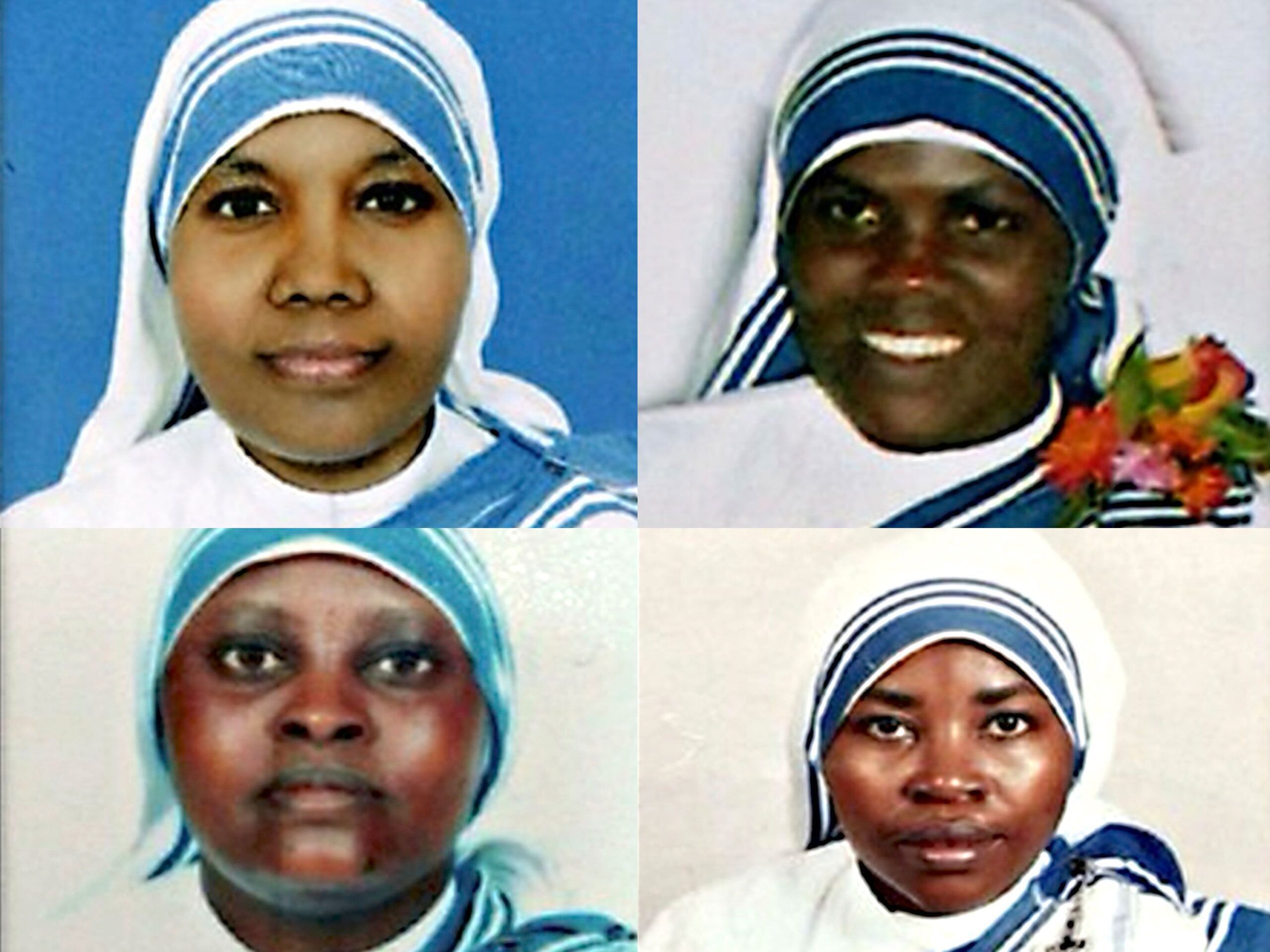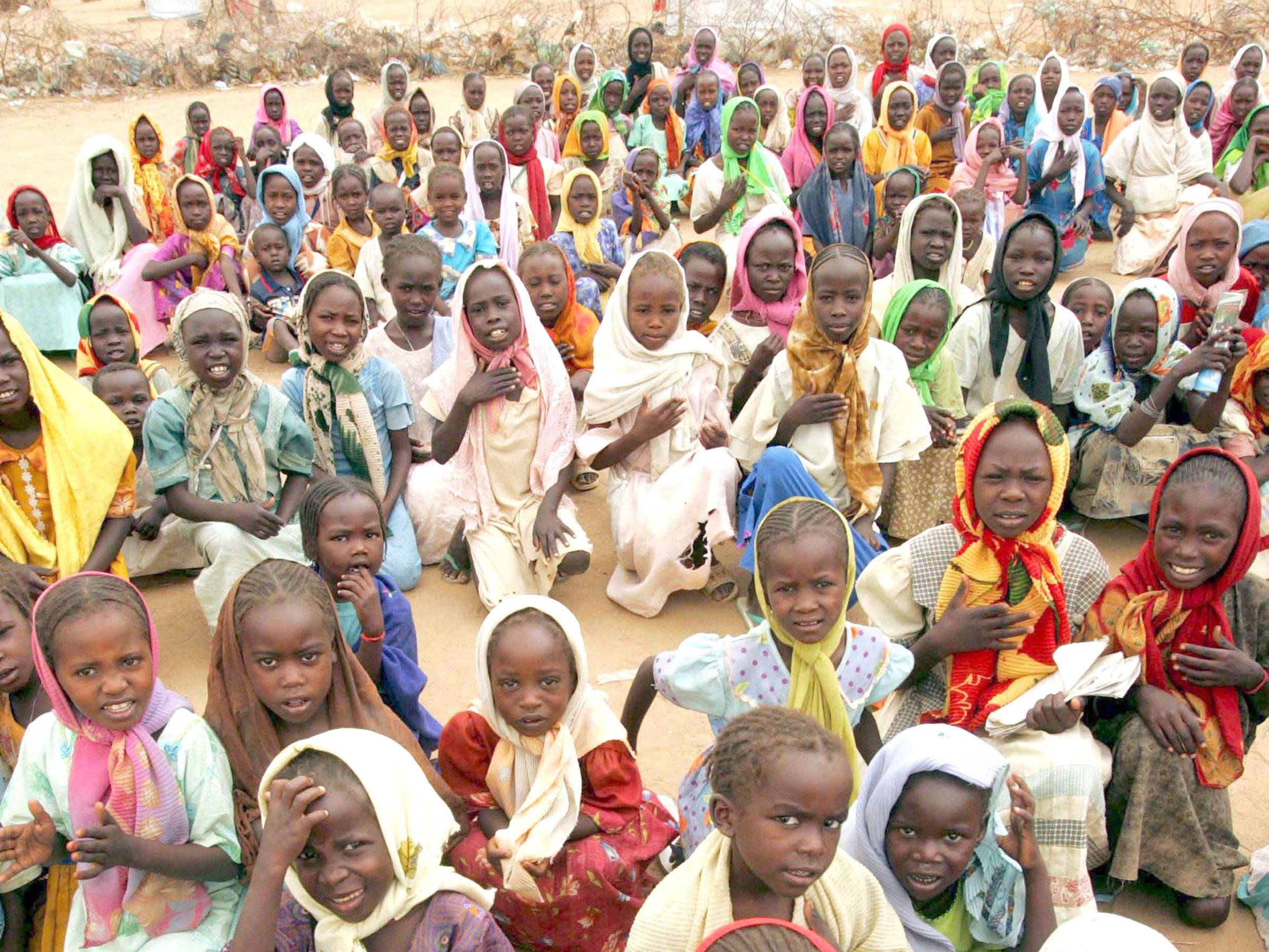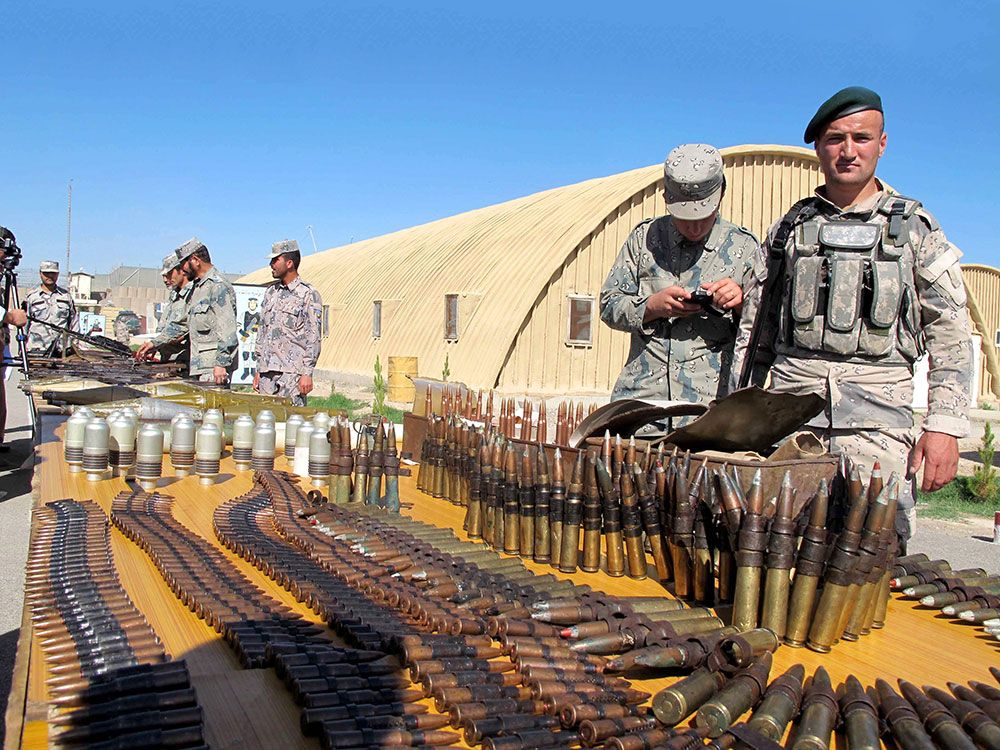The earliest Christian record we have in reference to the region is that of two courageous Jesuit missionaries, Cabral and Cacella, who passed through Assam in 1626 on their way to Tibet and Nepal. But the history of the Northeastern missions really begins with the German Salvatorian Fathers under the leadership of Fr. Otto Hoppenmuller who came to take up work in Shillong in the Khasi Hills in 1890 soon after the British had chosen it as the capital of their newly-created province of Assam. The Presbytarians had already built up a strong Christian community in the area. It was with considerable difficulty that the Salvatorians were able to lay a foundation for the future Church in Northeast India. However, they did so with profound commitment and immense pastoral wisdom. Parishes were opened, institutions came into existence and various types of publications were launched.
Aside from the progress they made in the Khasi Hills, they met with much success also among the Adivasis of the Assam plains who had migrated in large numbers from Jharkhand, Chhattisgarh and Orissa to work in the tea gardens of the Brahmaputra Valley. Among the migrants, there were Catholics who had been evangelized by Fr. Constant Lievens, SJ, and his colleagues. The Salvatorian Rudolf Fontaine opened contacts with them who, in turn, took the faith to more of their people scattered throughout the valley.
The work of the Salvatorians was making impressive progress and everything seemed favorable when World War I brought all their initiatives to a complete halt. India, being a British colony at that time, had asked the Salvatorian missionaries, who were from Germany, to leave the country and return home. Rome had no other alternative but to ask the Belgian Jesuits, who were working in the neighboring province of Bengal, to look after the Assam missions for some time. Though greatly understaffed, they did a phenomenal amount of work and the Christian community continued to grow.
In 1922, the missions of Assam, Manipur and Bhutan were placed under the care of the Salesians of Don Bosco, with Msgr. Louis Mathias as their leader. The Catholic community in the region, which numbered around 5,000, witnessed another period of expansion with parishes being opened in Dibrugarh, Tezpur, Tura and around Shillong which would all eventually become dioceses. In 1934, Bishop Louis Mathias was transferred to Madras (Chennai) and Fr. Stephen Ferrando was appointed the second Bishop of Shillong. Educational institutions multiplied, houses of formation came up, work was making great progress, when World War II broke out, and apostolic initiatives had to slow down.
A Period of Great Expansion
The growth of the Church after the conclusion of World War II and the Independence of India has been truly phenomenal. The outstanding feature of this period was the increase in apostolic workers, including diocesan clergy from other parts of India and from the region itself, and members of various religious congregations of both men and women who came in. As years passed, not only did the number of Christians in the region increase, but also vocations rose in significant numbers even as they were declining in other parts of the country. New congregations came to the region looking for vocations, adding to the strength of the missionary team.
Soon enough, new dioceses came into existence one after the other: after Dibrugarh, Tezpur and Tura, came Kohima, Diphu, Imphal, Aizawl, Guwahati and several others. Today there are 15 dioceses in Northeast India with the Catholic population moving close to two million. Along with a Catholic university, there are now several colleges, schools, seminaries, houses of formation, training centers, counseling centers, houses for the handicapped, for social work in aid of the socially deprived, uneducated women, street children, etc. A region that was considered marginal to the older Christian communities in India in earlier times, today it is fast emerging as a center for formation, training in skills, studies, publications, research and theological reflection. Young missionaries from Northeast India are already working in places as far as Peru, Swaziland, Tunisia, and Mongolia.
A Lay Initiative
The account of the entry of the Catholic Church into new areas in the region in different periods of history would read like a thriller, each in its own context. The Garo Hills area was barred to the Catholic Church until 1933, and Mizoram, Nagaland and Manipur, till after 1950s. In each of these areas, the Catholic community was built up from outside through students who were given evangelizing skills and lay leaders who were creative in apostolic efforts. The early growth of the Church in these areas was largely due to determined lay endeavor, the clergy assisting only from a distance.
The Role of Youth
In this respect, the story of Arunachal is the most recent. Where during the 1970s there were hardly a few dozen Catholics, today there are two dioceses and close to 300,000 believers. The miracle was worked by the young people who studied in Catholic institutions and experienced the power of the Gospel in their personal lives. The early memories of this young Church are very painful. There were many instances of harassments in the 70s and 80s: Bibles were burnt, churches were destroyed, believers were beaten up.
But gradually, the situation changed. Some of the persecutors themselves became promoters of the faith. The message of the Gospel was carried best by determined young people who took admission in Christian schools precisely to study about the Christian faith. They were eager to understand religious truths the best way they could. They showed old Christians how motivating the study of the Bible, especially that of the Acts of the Apostles could be. The example of Arunachal serves as a stimulating example for Christian communities at the earliest stages of their growth.
The Role of Women
In addition, one cannot discount the role that women played in the spread of the Gospel. One of the communities in Northeast India, the Khasi tribe, is matrilineal in tradition. According to their custom, the main share of the family property goes to the youngest daughter and not to the eldest son as in the case of other communities. The womenfolk among them are known for their administrative initiative which they took also to other areas of life; in this case, to missionary outreach. Zeal spreads from one community to another and, in a short time, women, among other tribes as well, learnt to become active evangelizers as teachers in schools, animators in parishes and faith-formators at home. Their example was truly inspiring.
Missionaries of Great Stature
The missions of Northeast India were fortunate to have missionaries of high calibre and leaders of exceptional competence. When Bishop Oreste Marengo, a Salesian missionary from Italy, died at the age of 94, the entire region lamented the loss of a patriarchal figure. He had pioneered three dioceses: Dibrugarh, Tezpur and Tura. He spoke more than 16 languages fluently and knew how to identify himself with all the indigenous communities with the greatest ease.
But, for a strategic sense, there was none like Archbishop Hubert D’Rosario. As the Bishop of Dibrugarh, he worked hard for the creation of the two dioceses of Imphal and Kohima and, as Archbishop of Shillong, he launched the dioceses of Tura, Diphu and Guwahati. The subsequent creation of Jowai and Nongstoin was also the fruit of his intense labor. Under his leadership, the missions of the Northeast developed into a full-fledged Church with theologates, philosophates, colleges, pastoral centers, social centers of diverse nature, and publications of various kinds.
Indigenous (Primal) Communities Open to the Gospel
The response to the Gospel of the various tribal groups in Northeast India opens our eyes to similar possibilities among the tribal communities of North Myanmar, North Thailand, Vietnam, Indonesia and many other indigenous communities in Asia and Africa. Such communities seem to have a deeper insight into the meaning of the biblical message and its relevance, since that message itself was once formulated to be intelligible to the tribal communities of Israel. Anthropologists make bold to say that some 40% of humanity, even if partly de-tribalized, live in societies that hold worldviews and values that are close to those of tribal communities, with their sense of solidarity, mutual responsibility, transparency, respect for tradition, closeness to nature, etc.
As the philosophy of individual success and eagerness for material achievement are making inroads into the hearts and minds of more and more people in the world today, there is a growing hunger for such values that used to inspire humanity at its earlier stages of development. It is precisely these values that the biblical tradition took up, developed and deepened. The message of the Gospel is likely to find the greatest response from communities that have still preserved these values to a great extent, or others that are longing for their reassertion in our times.
Village-visiting, Home-visiting
We have referred to community solidarity as one of the strengths of cultural groups that are described as “indigenous people” or “primal communities” in different parts of the world. The missionary makes an appeal to them when he manifests his evident solidarity with them. In the pastoral context, this solidarity is expressed, most of all, through his/her frequent visits to villages and families and familiar interactions with people. The closer he is to the people and the greater his commitment to them, the greater his persuasive power as well.
Possibly, it is in this form of apostolate that the missionary team in Northeast India has excelled. Aside from priests and catechists spending much time in visiting interior villages, there was a team of Sisters that was permanently at the service of this form of ministry. Much of the missionary success in this region must be attributed to this most edifying tradition that the missionary team sought consistently to maintain.
The Role of Catechists, Volunteers
Catechists played a central role in the growth of the Christian community in the region. Here, I do not refer only to the members of the pastoral team who are supported by the Church for their services but also to the countless number of volunteers who give part of their time for the sharing of the Gospel and strengthening of the faith. They look for no reward except the spread of God’s Kingdom. Since they have no official position in Church, it is not easy, even for those who plan to oppose Christian initiatives, to identify them.
Their presence in homes, markets, village roads, repair shops, health centers, post offices, journeys over hills, wayside gatherings, makes a difference when they are convinced of the message of Jesus. A casual word, a touching expression of solidarity, a gentle invitation… we do not know what helps a person to make a decision for Christ. If such Christian initiatives are taken by persons who have adequate training, in addition, having been in a Catholic school or given special formation, the impact made is all the greater. And miracles do take place.
Cultural Insertion a Must
Certainly, the cultural insertion into the world of the diverse ethnic groups of the Northeast by the early missionaries, whether they were from Europe or from other parts of India, helped a great deal in making the Good News of Jesus both intelligible and acceptable to the communities. Long before the concept of ‘inculturation’ came to be widely accepted, the missionaries in the region had given it the greatest importance. They were quick in coming on the wavelength of local communities, breaking down prejudices and removing barriers, so that an option for Christ did not mean an alienation from one’s own people, culture or identity.
Inculturation in this context did not mean merely adopting some external elements in the local culture into Church life and liturgy, though this is part of it. It rather meant accepting and promoting the worldviews, attitudes, value-systems, relationship styles and organizational patterns of the communities except those elements that were evidently contrary to the Gospel. People begin to see in the message of Jesus a source of inspiration for self-development, progress, and personal and collective betterment, rather than an alien doctrinal system or a cold legal structure.
An Uplifting Hand Must not Become a Dominating Force
A word of realistic self-evaluation may also be relevant at this moment. The young Christian community here cannot be totally different from those in any other part of the world where the faith is being put to test, by opposition from outside or indifference from within. As long as Christianity remains an “inspiration,” it keeps drawing people to itself with its convincing power but, if it turns out to become an inward-looking power-structure, it invites jealousy, and even stiff opposition.
The missionary team in the region keeps reminding itself what can happen to it in the course of history. Today society looks at the Church as an “uplifting hand.” But as time passes and the Church seeks to stabilize itself, will people begin to see it, first, as an organizing and disciplining hand, then, as a “dominating force”…and God forbid, finally, a force that takes advantage of people? In the history of the Christian community, the figure of the Church assumed various images in the minds of the people. We have a collective responsibility for keeping the image of the Church true to what Jesus wanted it to be.
The Church’s Vocation: To Be a Light to the Nations
We are surely living through a period of history when the Church is facing serious opposition in several parts of the world. We can try to explain away this phenomenon by claiming that the opposition is due to the fact that the Christian community keeps up courageously, placing the challenges of the Gospel before humankind. Certainly that is part of the truth.
But our opponents see things differently. They feel they are opposing the “self-interest” of a powerful community that appears as a rival in their neighborhood and deliberately keeps its ideals at a distance for its own advantage. We would say this is totally an unfair view. However, this may be an occasion for collective self-examination, on the part of Christian believers, how distant we are from being a “light to the nations” and an “inspiration” to society. The closer we are to the Gospel ideals, the greater will be our persuasive power, whether in Northeast India or anywhere else in the world. This is precisely what Pope Francis is urging us to do.


















